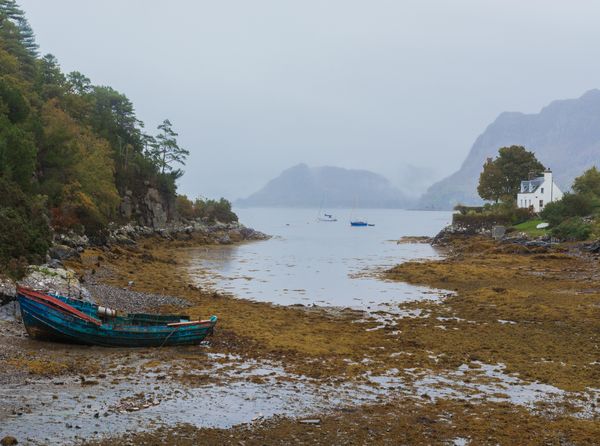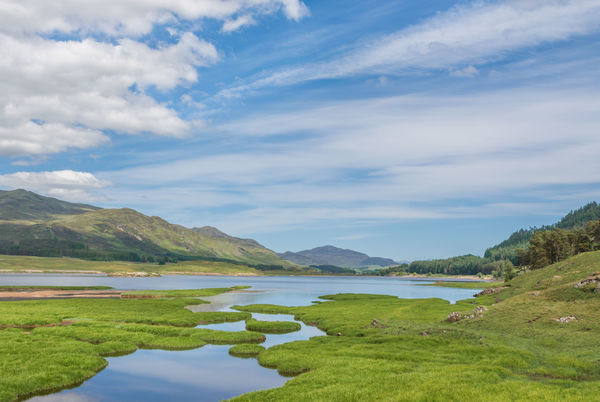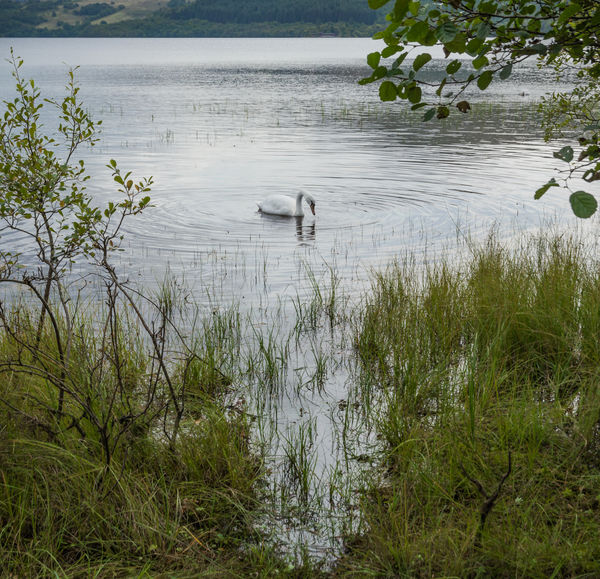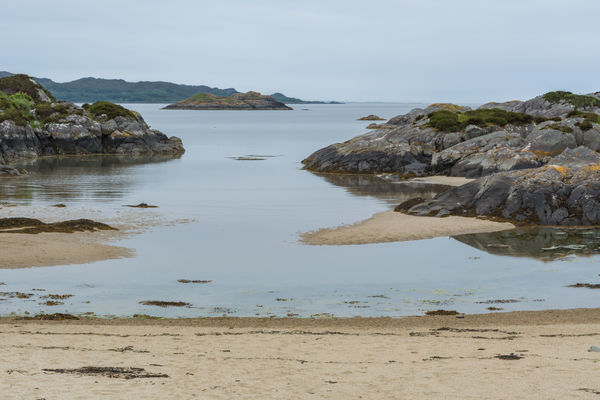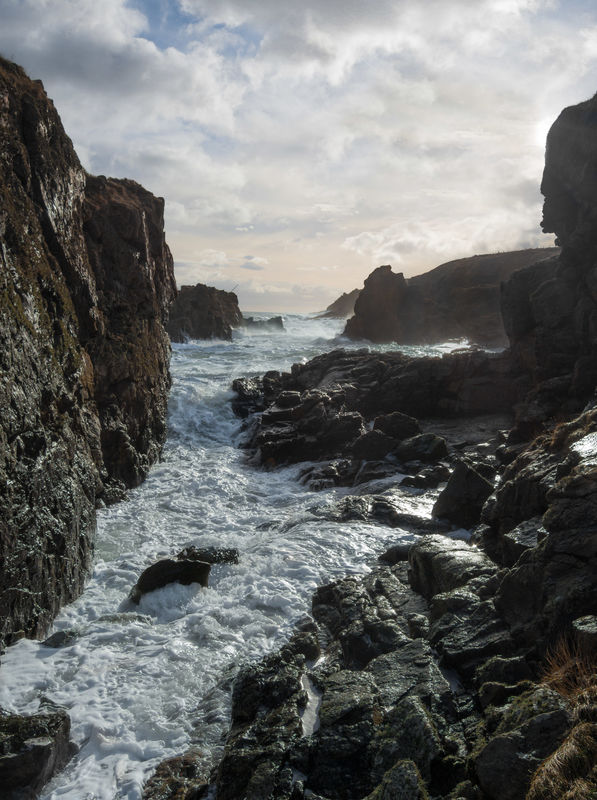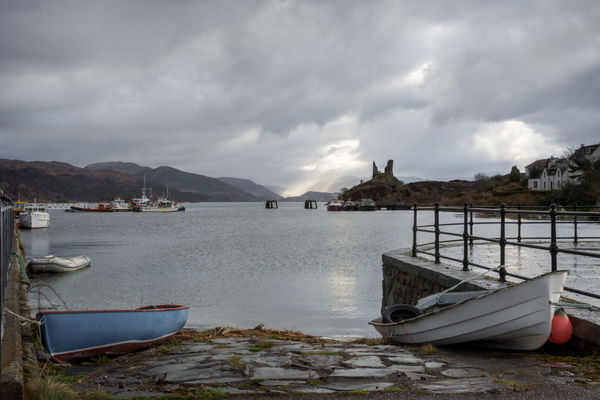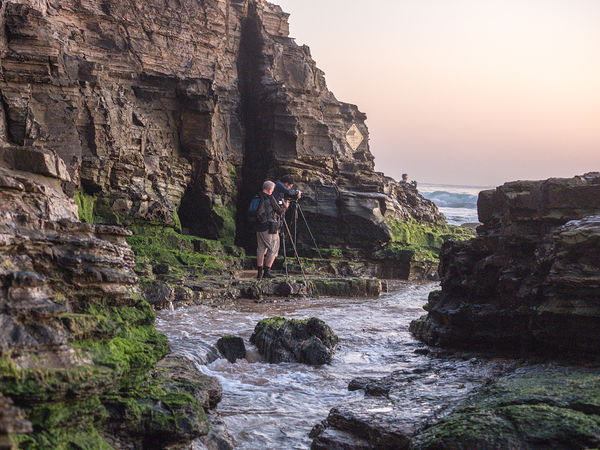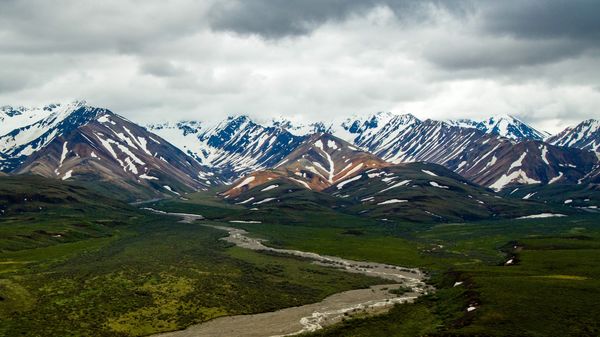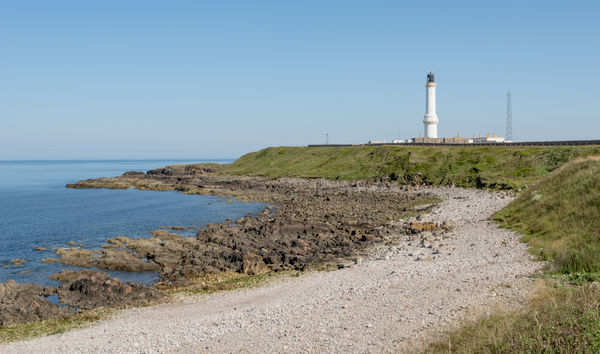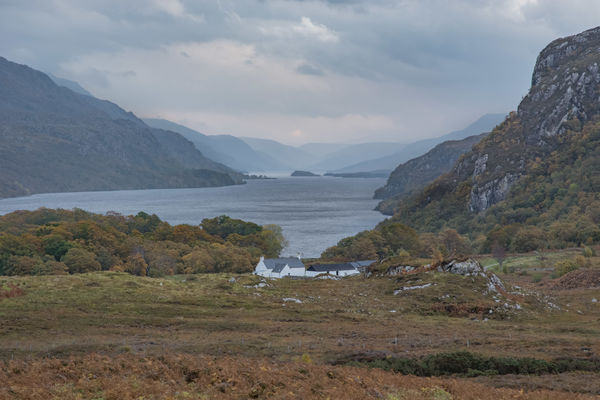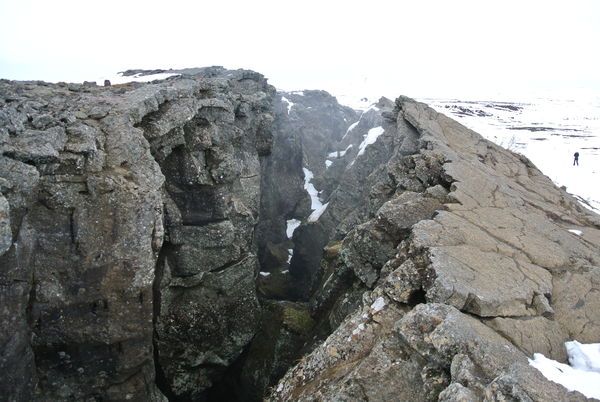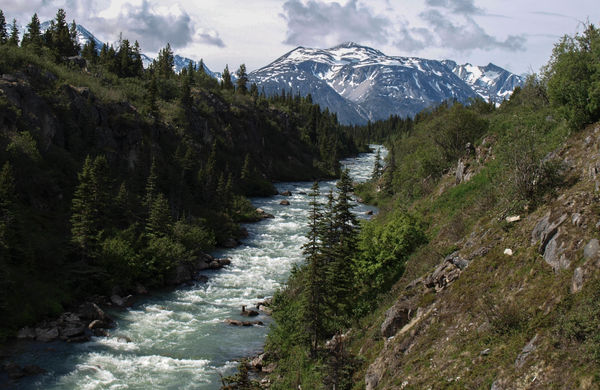The Use of Clear Channels in Composition (discuss/share).
Dec 12, 2018 12:02:25 #
Hi. We're all familiar with the use of leading lines and natural framing in composition, but we don't see many references to channels (composition elements that channel our attention). The channels don't have to be completely clear but as a general rule, clear channels work best because of their lack of potential distractions. Recently I've found myself looking for any chances to use clear channels in my landscape shots. To my mind they're leading lines on steroids.
Where natural framing helps to focus our attention and leading lines lead the eye through a composition, channels (attention channelers) will guide the eye into the scene, perhaps in a subtler, less obvious but potentially more effective way. Clear channels can guide the eye towards specific objects, but they can also guide the eye into the shot and in so doing they will add to the sense of depth in the image.
I'll post a few of the examples I've collected over the past few years, and I'm hoping others will post examples of their own (hopefully with a bit of a commentary or explanation ). Or perhaps you'd just like to express an opinion, a preference or your own observations regarding the use of such channels in composition.
). Or perhaps you'd just like to express an opinion, a preference or your own observations regarding the use of such channels in composition.
These examples all involve water, but I wasn't thinking specifically about water channels. Any continuous empty space running through the composition (i.e. a clear channel) would qualify as far as my definition is concerned, provided it performs the function of directing the viewer's attention into the scene. That could include such things as a road or path that starts in the foreground or a clearing in a forest viewed along its length.
EDIT - The use of the term "channel" gets clarified as the thread progresses, so if you care to read on......
-
Where natural framing helps to focus our attention and leading lines lead the eye through a composition, channels (attention channelers) will guide the eye into the scene, perhaps in a subtler, less obvious but potentially more effective way. Clear channels can guide the eye towards specific objects, but they can also guide the eye into the shot and in so doing they will add to the sense of depth in the image.
I'll post a few of the examples I've collected over the past few years, and I'm hoping others will post examples of their own (hopefully with a bit of a commentary or explanation
 ). Or perhaps you'd just like to express an opinion, a preference or your own observations regarding the use of such channels in composition.
). Or perhaps you'd just like to express an opinion, a preference or your own observations regarding the use of such channels in composition.These examples all involve water, but I wasn't thinking specifically about water channels. Any continuous empty space running through the composition (i.e. a clear channel) would qualify as far as my definition is concerned, provided it performs the function of directing the viewer's attention into the scene. That could include such things as a road or path that starts in the foreground or a clearing in a forest viewed along its length.
EDIT - The use of the term "channel" gets clarified as the thread progresses, so if you care to read on......

-
Dec 12, 2018 12:06:08 #
I simply look at the "center line" of the channel as a leading line.
Nice shots by the way.
Nice shots by the way.
Dec 12, 2018 12:10:46 #
Longshadow wrote:
I simply look at the "center line" of the channel as a leading line.
That's a good condensation of how they work. Thanks for commenting, Longshadow, and thanks for the compliment.
Dec 12, 2018 13:14:31 #
R.G. wrote:
Hi. We're all familiar with the use of leading li... (show quote)
Very nice set.
I have never thought of the term "channels". Mine tend to be a bit more literal.
One of the few examples from the archives is this one at Warriewood beach (Northern bneaches, Sydney, Australia) on a dawn shoot where the light didn't realy cooperate (no clouds). In those cases I tend to experiment and/or use other photographers as part of the scene or shoot textures. Those rocks with the green moss on them are extreemly slipery so all the keen photographers wear boots with steel spikes on them.
.
Dec 12, 2018 13:43:57 #
R.G. wrote:
Hi. We're all familiar with the use of leading li... (show quote)
This is an interesting idea. I had thought more along the concept of leading lines when I took this photo, but channels would work too. Although I could get out my thesaurus and come up with another word, ‘channels’ works quite well.
This is using a glacier river as a ‘channel’. It was taken from a overlook on the road inside Denali NP on the way to Kantishna Lodge.
Dec 12, 2018 13:44:38 #
A very interesting theme, R.G.! I think this is a valuable discussion to help people with composition choices and make them aware of how our eye travels through a scene. I confess to not paying enough attention to leading lines - whether on steroids or not.
Probably the closest I have to your point (if referring literally to water) is attached. I stood on a bridge (auto/pedestrian) and shot towards the smoky sun. I have a few that use roads and a whole lot with rows of hops growing apparatus
Probably the closest I have to your point (if referring literally to water) is attached. I stood on a bridge (auto/pedestrian) and shot towards the smoky sun. I have a few that use roads and a whole lot with rows of hops growing apparatus

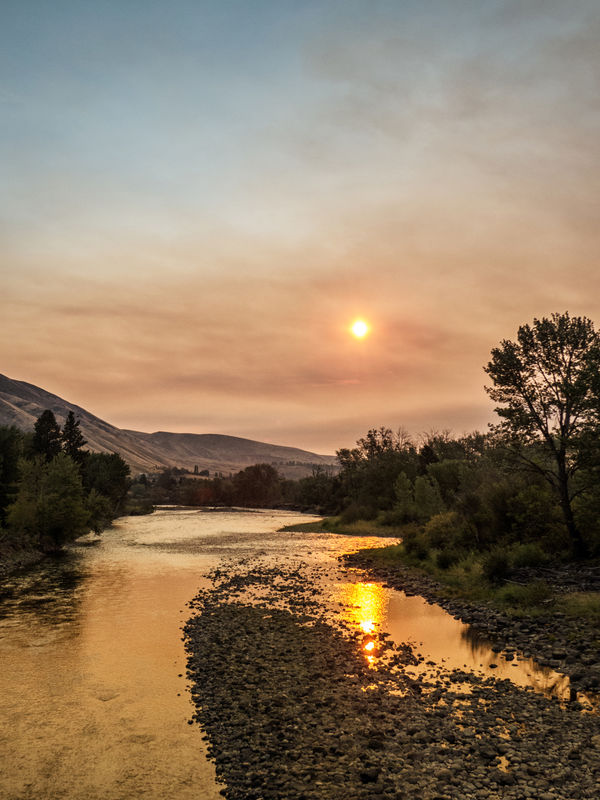
Stronger?
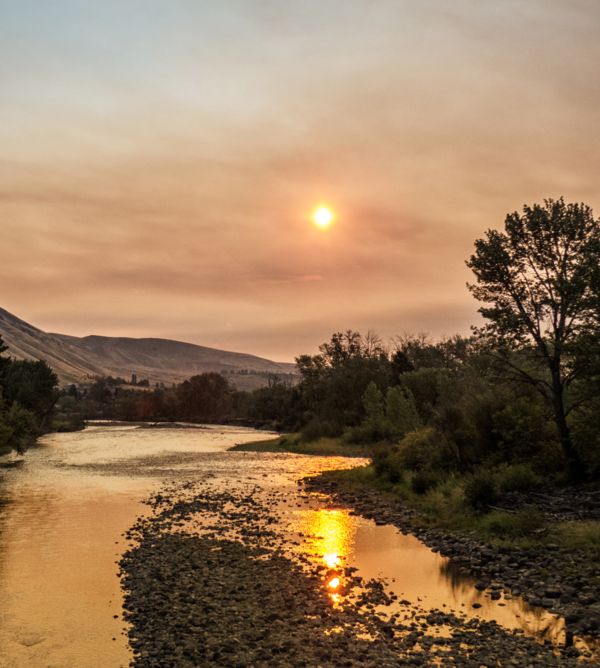
Dec 12, 2018 13:52:17 #
RichardTaylor wrote:
Very nice set. br br I have never thought of the ... (show quote)
Thanks for commenting and posting an example, Richard. I suspect that most people use channels more than they realise and possibly don't think of them as specific composition elements. For example if you see a shot where a road starts off in the immediate foreground and leads off into the distance, where a large portion of the bottom edge of the photo is taken up with the road and perhaps one or both of the bottom corners has the edge of the road coming out from it/them, I would describe that as the road acting as a channel.
When I chose the word "channel", I wasn't thinking specifically of literal channels, I was thinking about any composition element that channels the viewer's attention in a specific direction, in a similar way to leading lines. Having said that, literal channels will do a good job of channeling our attention (see some of the above examples).
I'll post an example of something that wouldn't normally be thought of as a channel (the stony part of a beach), but it does a good job of directing our attention to a specific subject (a lighthouse).
-
Dec 12, 2018 14:03:53 #
pmorin wrote:
This is an interesting idea. I had thought more along the concept of leading lines when I took this photo, but channels would work too. Although I could get out my thesaurus and come up with another word, ‘channels’ works quite well.
This is using a glacier river as a ‘channel’. It was taken from a overlook on the road inside Denali NP on the way to Kantishna Lodge.
This is using a glacier river as a ‘channel’. It was taken from a overlook on the road inside Denali NP on the way to Kantishna Lodge.
Thanks for responding, PM. Your posted example skirts the borderline between a leading line and what I'm referring to as a channel. If you can imagine the river being a bit closer and being a more prominent part of the immediate foreground (not always a requirement), that to my mind would put it firmly into the category of being a channel.
Perhaps I should have put more forethought into my original definition of a channel. An empty space running up the centre of the scene would also qualify as a channel, IMO, provided it did the job of leading the eye into the shot. I'll post an example where the channel isn't even part of the foreground, but it does lead the eye off into the distance.
-
Dec 12, 2018 14:10:17 #
Linda From Maine wrote:
....I think this is a valuable discussion to help people with composition choices and make them aware of how our eye travels through a scene.....
Thanks for commenting, Linda. That was exactly my hope when I decided to start the thread. You've possibly noticed that channels have been a recurring theme with my more recent posted shots. I've found that they're very useful in lifting a shot up a level and they do make good attention-directors. My original definition of channels could have been better. Hopefully some will read the thread through and get to the refinements of that definition
 .
.Dec 12, 2018 14:49:17 #
Okay, so I kind of get the idea of "channels" (the "leading lines on steriods" description helps). I look for leading lines frequently, but have never sought out a "channel."
That said, I don't know if this photo qualifies. It's of the rift that is dividing the island of Iceland (yes, that's steam emanating from it, not fuzziness in the photo). I think you could say the channel is the passage through the rift...
That said, I don't know if this photo qualifies. It's of the rift that is dividing the island of Iceland (yes, that's steam emanating from it, not fuzziness in the photo). I think you could say the channel is the passage through the rift...
Dec 12, 2018 15:03:59 #
Just Fred wrote:
Okay, so I kind of get the idea of "channels" (the "leading lines on steriods" description helps). I look for leading lines frequently, but have never sought out a "channel."
That said, I don't know if this photo qualifies. It's of the rift that is dividing the island of Iceland (yes, that's steam emanating from it, not fuzziness in the photo). I think you could say the channel is the passage through the rift...
That said, I don't know if this photo qualifies. It's of the rift that is dividing the island of Iceland (yes, that's steam emanating from it, not fuzziness in the photo). I think you could say the channel is the passage through the rift...
Thanks for responding, Fred. Your rift certainly directs our attention and I would say it fits the definition. The only thing I have against it in this case is that it also qualifies as the main subject of the scene.
Dec 12, 2018 17:22:37 #
R.G. wrote:
Thanks for responding, Fred. Your rift certainly directs our attention and I would say it fits the definition. The only thing I have against it in this case is that it also qualifies as the main subject of the scene.
That's true, R.G. I must say that my eye is always drawn (finally) to the person standing in the right...

Dec 12, 2018 20:33:15 #
Dec 12, 2018 23:28:02 #
Dec 13, 2018 00:05:47 #
R.G. wrote:
When I chose the word "channel", I wasn't thinking specifically of literal channels, I was thinking about any composition element that channels the viewer's attention in a specific direction, in a similar way to leading lines. Having said that, literal channels will do a good job of channeling our attention (see some of the above examples). -
I like where this is going, R.G. I can see similarity between "channels" and "leading
lines," but in most of your examples, the composition of the image literally
channels you to the area of interest.
I thought of this one which I captured in Key West last month, and thought that
the "islands" on each side of the frame "channel" the water and your eyes to
the moored boats.
Tim
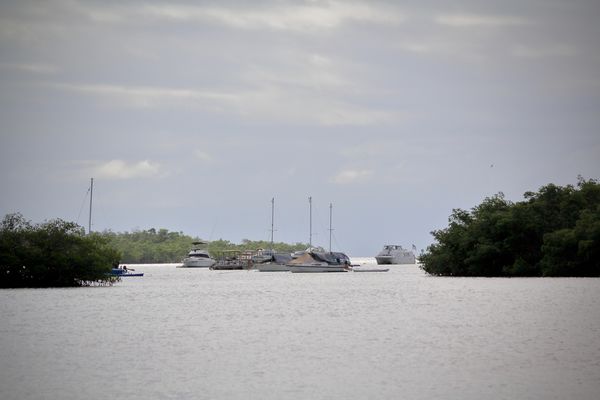
If you want to reply, then register here. Registration is free and your account is created instantly, so you can post right away.

